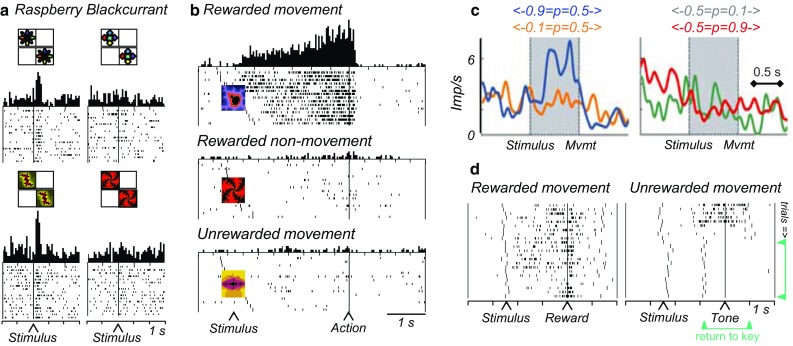Fig. 4.

Reward processing in monkey striatum. a Pure reward signal in ventral striatum. The neuron discriminates between raspberry and blackcurrant juice irrespective of movement to left or right target, and irrespective of the visual image predicting the juice (top vs. bottom). Trials in rasters are ordered from top to bottom according to left and then right stimulus presentation. From Hassani et al. (2001). b Conjoint processing of reward (vs. no reward) and movement (vs. no movement) in caudate nucleus (delayed go-nogo-ungo task). The neuronal activities reflect the specific future reward together with the specific action required to obtain that reward. From Hollerman et al. (1998). c Action value coding of single striatal neuron. Activity increases with value (probability) for left action (left panel blue vs. orange), but is unaffected by value changes for right action (right panel), indicating left action value coding. Imp/s impulses per second. From Samejima et al. (2005). d Adaptation of reward expectation activity in ventral striatum during learning. In each learning episode, two new visual stimuli instruct a rewarded and an unrewarded arm movement, respectively, resulting in different reward expectations for the same movement. With rewarded movements (left), the animal’s hand returns quickly to the resting key after reward delivery (long vertical markers, right to reward). With pseudorandomly alternating unrewarded movements, the hand returns quickly after an unrewarded tone to the resting key in initial trials (top right), but subsequently returns before the tone (green arrows), indicating initial reward expectation that disappears with learning. The reward expectation-related neuronal activity (short dots) shows a similar development during learning (from top to bottom). From Tremblay et al. (1998)
